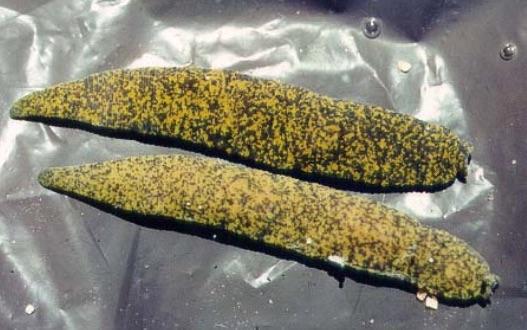
Credit: Karen Kidd
Today, we pull the veil back on the secret sex lives of leeches and how researchers at McMaster University and Fisheries and Oceans Canada are using that information to learn about endocrine disrupting chemicals. Leeches, who gained worldwide popularity when making their film debut in the blockbuster “Stand by Me” in 1986, have actually been around much, much longer. They are found on every continent in freshwater habitats where there is little flow. They are popular bait for fishing, and doctors continue to use them in medical treatments.
We know a lot about leech reproduction. For example, leeches are hermaphroditic, which means they have both male and female sex organs, but that is not all that uncommon for invertebrates. Some families of leeches demonstrate protrandry (they start life as a male and then change into a female), while others self-fertilize, brood eggs and show parental care. Still others cross-fertilize with other leeches, sometimes implanting sperm in one or both of the partners’ body walls and sometimes directly introducing sperm into a genital pore with a penis. Their reproductive cycle also varies across families, with some only reproducing one time in their life, and others reproducing multiple times in their lifespan.
We also know a little about the impact of environmental contaminants on leeches. As a matter of fact, leeches have been shown to be highly sensitive to metals in aquatic systems. Leeches can be useful as an environmental quality indicator, as the aquatic ecosystems where leeches are found are often a sink for contaminants. However, even though studies have looked at how some environmental contaminants affect leech populations, very little is known about how they influence leech community composition, species abundance, egg production, growth rates and gonad size. For example, plenty of studies have been conducted at the Experimental Lakes Area in Ontario, Canada, to study the effects of synthetic estrogen (17α-estradiol [EE2]) on fish, other types of invertebrates, and amphibians. Synthetic estrogens are used in oral contraceptives and enter aquatic system when they are not completely broken down in wastewater treatment plants. The compound EE2 was shown to have profound effects on fathead minnows, collapsing their population, and occasionally affected amphibian hatching success and gonad development. However, little attention was given to the effect of EE2 on leech communities until now.
In their article, published in Environmental Toxicology and Chemistry, Karen Kidd, professor at McMaster University and lead author, documents that the EE2 appeared to have little impact on the abundance of leeches, but notes that there was “increased condition in one species and some changes in relative gonad sizes of reproductive organs.” This may be because there was an increase in their food supply of other invertebrates, an indirect effect of EE2 linked to reduced fish numbers. For the leech species H. marmorata, the weight of the epididymis (a duct behind the testes) and the sperm sac size decreased, but the length of the testes, prostrate and penis sheath increased in exposed individuals. Likewise, EE2-exposed leeches were associated with growth in ovisac and albumen and vaginal bulb lengths. However, these leeches showed few individual-level and no population- or community-level responses, suggesting that they are much less sensitive to this endocrine disruptor than fish. There had been some thought that leeches may be an ideal study species for assessing contaminant effects – as noted above, they are sensitive to metals and ubiquitous – but, this study suggests that they may be less responsive to endocrine disrupting compounds, such as EE2.
###
Media Contact
Jen Lynch
[email protected]
Related Journal Article
http://dx.




